1. Milk Delivery Cart Dogs
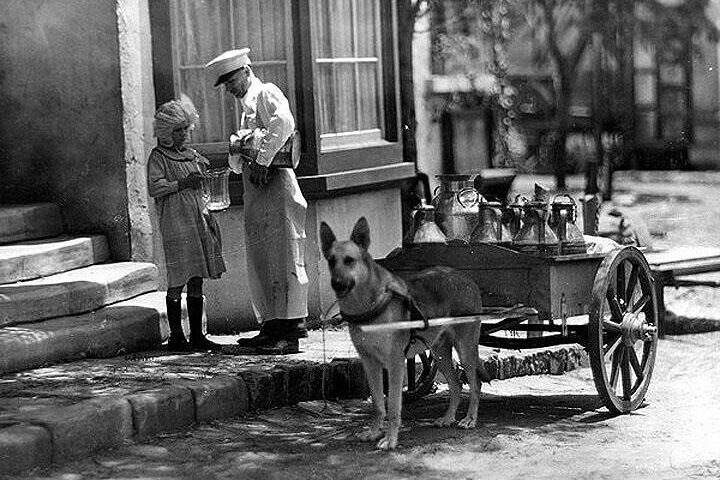
Let’s take a stroll down memory lane to explore jobs dogs once held that quietly disappeared over the last century. Before refrigeration and modern grocery stores, families relied on milk deliveries at their door. Strong dogs pulled small carts loaded with metal milk canisters, stopping at houses and pausing patiently while people collected their daily supply. Breeds like Newfoundlands or Bernese types were common for this work. When electric refrigeration and delivery trucks became widespread, these routines ended. Today the image of dogs walking routes with milk carts lives only in postcards and family stories.
2. Street Bread Seller Dogs
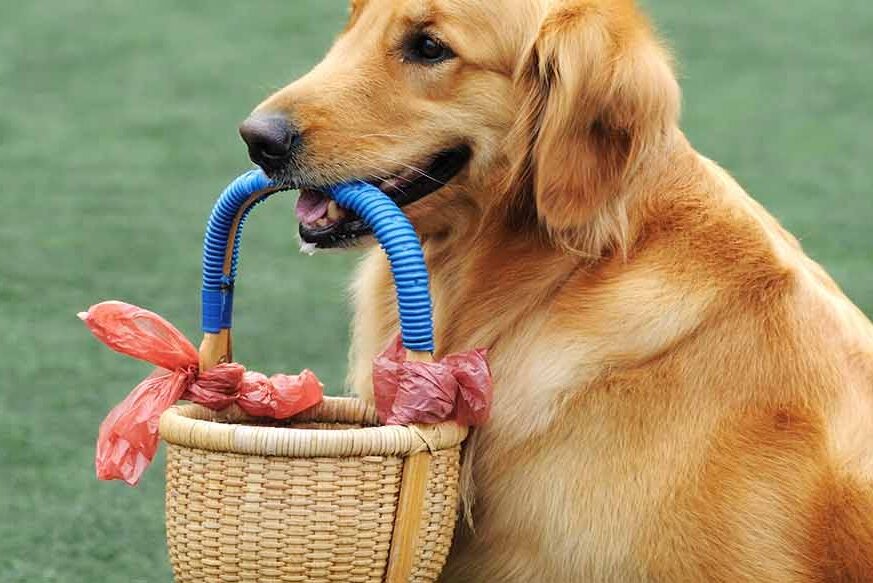
In narrow city streets across Europe, some bakers trained dogs to carry small baskets of bread to customers. The dogs moved carefully, jingling tags to announce their arrival. They followed precise routes daily, ensuring everyone received their loaf on time. Dense urban neighborhoods made this system practical when carts and horses struggled to navigate. Centralized bakeries, motorized deliveries, and storefront access eventually replaced the need for dogs to deliver bread. While the charm of a dog bringing fresh bread to your door is mostly gone, it reminds us how adaptable dogs were to human routines in the past.
3. Firehouse Hose Cart Dogs
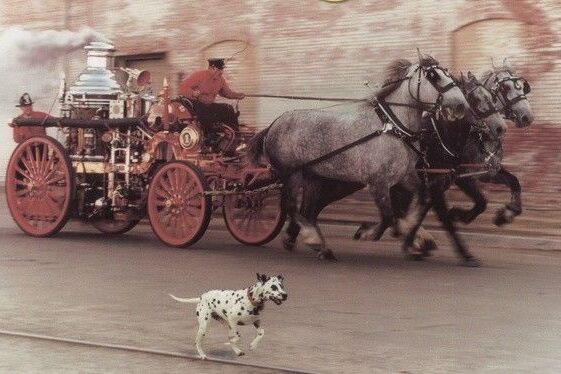
Before gasoline engines, fire brigades relied on hand-pulled hose carts, and dogs ran ahead to guide crews and alert townspeople. They cleared streets, helped horses stay calm, and ensured firefighters could reach emergencies quickly. Dalmatians became the most iconic breed for this work because of their stamina and steady temperament. When trucks replaced carts and modern roads made canine guidance unnecessary, dogs transitioned from workers to mascots. The image of a dog running ahead of a fire crew might seem quaint today, but it shows how dogs were trusted partners in keeping communities safe before technology took over.
4. Textile Mill Rodent Guards
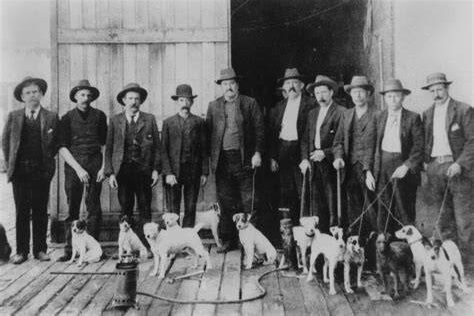
In large textile mills, stored fibers like cotton and flax were constantly threatened by rodents, so terriers were often employed to patrol weaving rooms and storage areas. Their presence protected raw materials, prevented damage to machinery, and maintained hygiene standards. These dogs had to be alert and persistent to keep pests away. Industrial rodent control, chemical solutions, and building improvements eventually made live guards unnecessary. Although the job disappeared, it highlights how human ingenuity relied on canine instincts to solve everyday problems. Terrier breeds may still have strong prey drives today, but the formal role in mills no longer exists.
5. Sled Message Couriers

In snowy regions before telephones and radio, dogs carried written messages between remote settlements. They memorized specific trails over frozen rivers, forest paths, and temporary winter tracks, ensuring communication continued during storms when humans could not travel safely. Teams of dogs made long journeys, delivering letters, orders, and news reliably. As telegraphs, radio towers, and satellites connected communities, the messenger role vanished. Today sled dogs remain mainly for sport or cultural demonstrations, but their historic purpose of keeping communities linked is mostly forgotten. These working dogs were essential for survival in harsh climates long before modern communication existed.
6. Canal Towpath Hauling Dogs
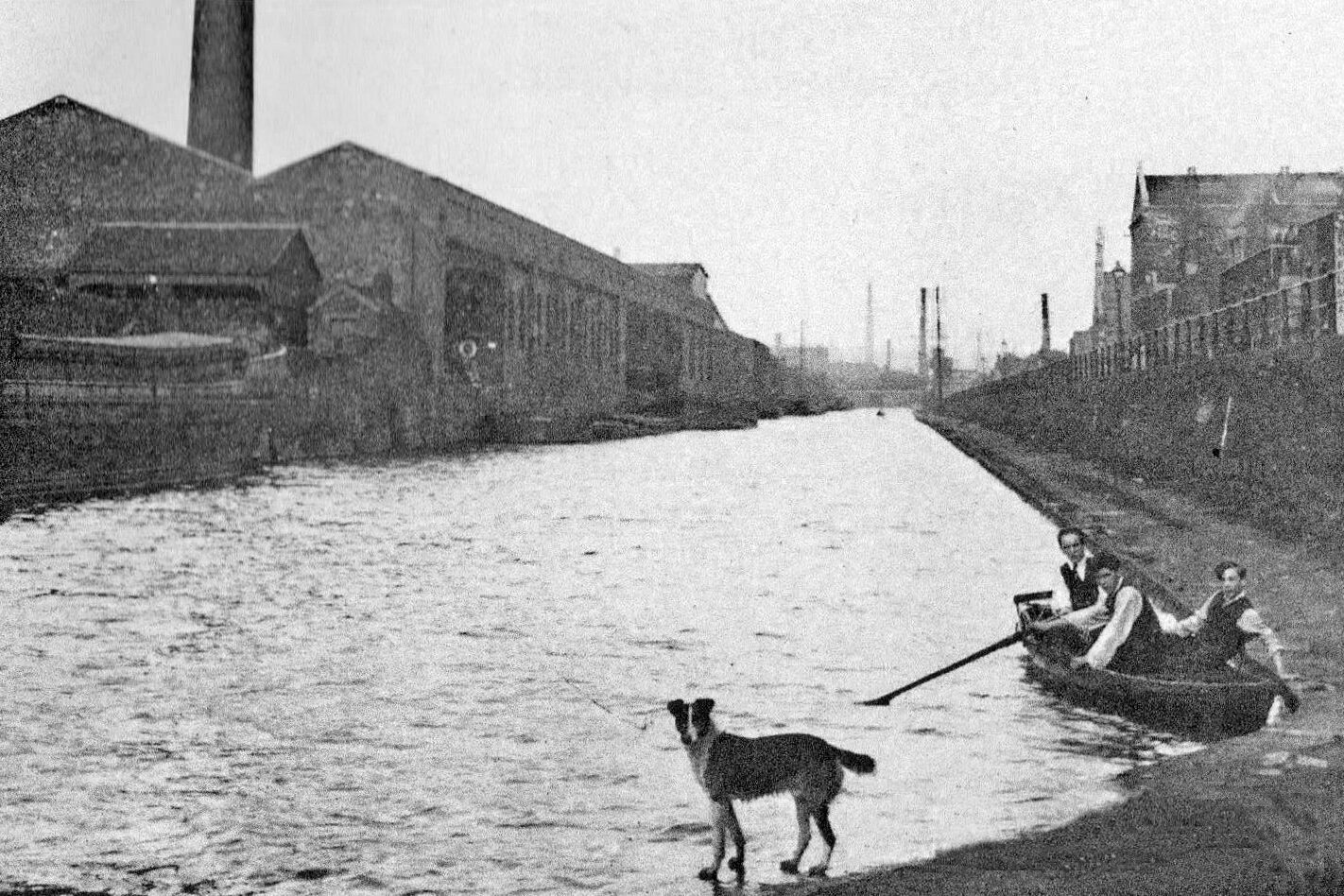
Along early canals, smaller boats were pulled by dogs walking along towpaths. They maintained steady pacing, keeping ropes tight and boats moving smoothly. These dogs worked long distances, often facing weather and uneven terrain. While large barges relied on horses or mules, these dogs handled personal cargo and helped small communities transport goods efficiently. With the arrival of railroads and motorized boats, canal transport became less essential, and dogs stopped performing this role. Today the paths remain for hiking and cycling, but the image of a dog faithfully towing a small boat is a quiet reminder of industrial life long ago.
7. Shepherd Night Watch Dogs
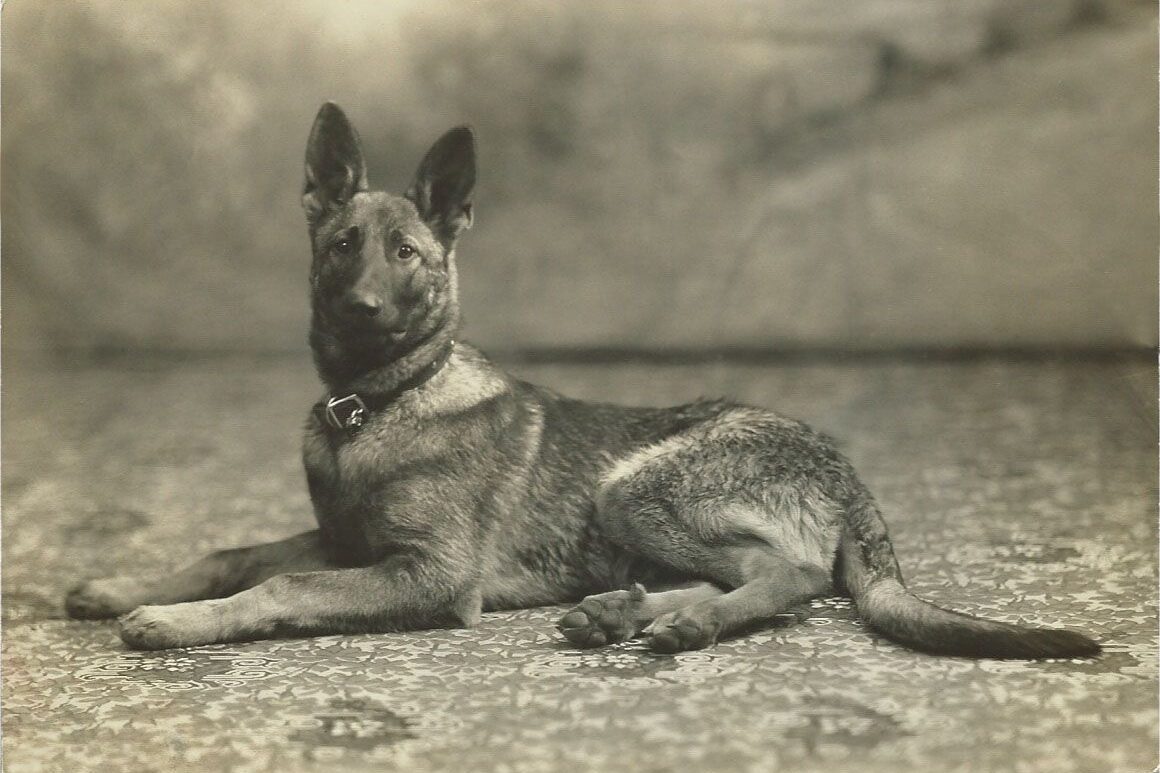
On farms, some shepherding dogs worked specifically at night, staying awake while the shepherd slept to protect livestock. They listened for predators such as wolves, coyotes, or thieves and gave early warnings when danger approached. Breeds like the Great Pyrenees excelled at this duty because of their vigilance and calm nature. Modern fencing, GPS tracking, and improved pasture security reduced the need for overnight canine guards. Although the instinct remains in some breeds, the formal occupation faded over time. These dogs once carried immense responsibility for livestock safety and now remind us how vital their instincts were to farmers.
8. Market Stall Cash and Parcel Runners

In bustling historical marketplaces, dogs carried money bags, parcels, or purchased goods between stalls or from shops to homes. They memorized routes and returned accurately, showing remarkable trust and intelligence. This job allowed shopkeepers to multitask while relying on canine helpers. Secure cash registers, structured stores, and eventually online shopping eliminated the need for these dogs. The practice demonstrates how humans trusted dogs with important tasks long before technology simplified commerce. Today these dogs are no longer present, but they remain an example of partnership between humans and animals in everyday work that required precision and loyalty.
9. War Trencher Message Dogs
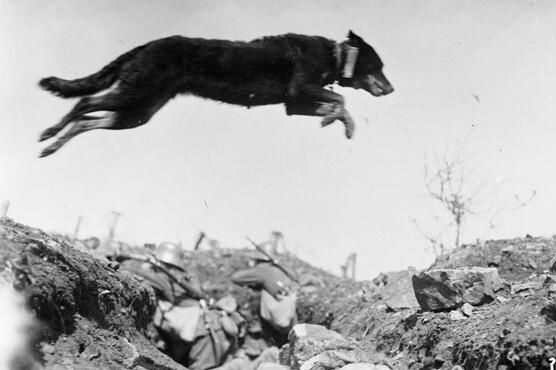
During World War I, dogs delivered messages across dangerous trenches, carrying written orders, medical information, or urgent calls for reinforcements. They were trained to ignore gunfire, navigate debris, and complete their missions quickly. Their speed and reliability saved lives and allowed communication to continue under conditions too dangerous for humans. With the introduction of radios and later digital communication, this role disappeared. The courage and skill of these dogs are rarely remembered, but they shaped military strategy and proved that dogs could work under extreme stress while remaining focused. Their legacy continues in modern military working dog programs.
10. Hospital Therapy Dogs Before Therapy Was a Word

In hospitals during the 19th and early 20th centuries, dogs roamed wards offering comfort to patients, especially children. These animals lived on site and helped relieve stress, providing companionship in long recovery periods. The practice was informal and not called therapy, but it shows early recognition of emotional support. Later infection control measures removed freely roaming animals, changing hospital practices. Modern therapy dog programs reintroduced structured visits, but the original presence of dogs living and comforting patients daily is mostly gone. These early hospital dogs represent kindness and instinctual care long before therapy became formalized in medical practice.
11. Lighthouse Companion and Alert Dogs
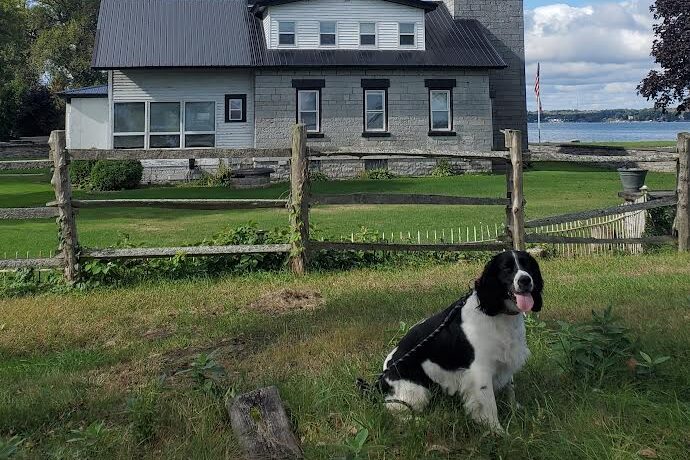
Lighthouse keepers often lived in isolated locations, and dogs helped them with safety by alerting to approaching ships or shifting storms. They learned patterns in the wind and waves and responded with barks or movement. As lighthouses became automated and navigation systems improved, dogs were no longer needed for these tasks. Their contribution is preserved in lighthouse keeper memoirs as loyal partners rather than pets. These dogs shared the burden of coastal safety, showing that animals could take on critical jobs. Today their work is a quiet memory of human and canine cooperation in remote, challenging environments.
12. Logging Camp Supply Pullers

In northern timber regions, dogs helped haul supplies between camps and cutting sites. They navigated snowy trails and narrow passes that horses could not traverse. The dogs remembered routes with incredible accuracy and worked tirelessly in harsh conditions. When tracked vehicles, snowmobiles, and trucks replaced canine hauling, this job disappeared. Logging diaries describe dogs as dependable workers who never lost their way. Today, dogs in logging areas are companions rather than laborers, but their memory highlights how dogs contributed to demanding physical work and were trusted for tasks that required endurance, intelligence, and persistence in environments where humans alone could not manage.
13. Barge Docking Signal Dogs
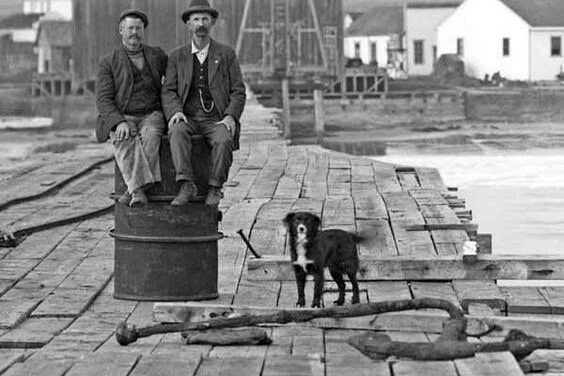
Before radio communication in ports, some dogs were trained to relay rope signals or respond to audible cues that helped with docking ships. This work required consistent barks and precise responses to human commands. As maritime radio systems improved, the role of signal dogs became unnecessary. These dogs were an ingenious solution for coordination at busy docks. While the practice no longer exists, it demonstrates how dogs were incorporated into technical tasks requiring attention, timing, and reliability. The memory of dogs guiding ships into harbors is a reminder of the creative ways humans and animals collaborated in practical, everyday jobs.
14. Traveling Performer Trick Dogs
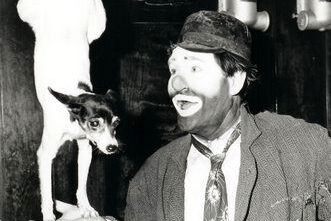
Circuses and street shows relied on dogs trained to perform tricks in towns before mass media entertainment became common. These dogs balanced, jumped, and danced to amuse audiences during street performances or small circuses. The rise of television and centralized entertainment reduced the need for traveling performance dogs. While dogs still perform in structured shows or competitions, the itinerant lifestyle for canine performers largely vanished. This history highlights how dogs adapted to human culture and entertainment needs. The memory of these traveling performers reminds us of a time when animals were integral to community amusement and shared experiences.
15. Duck Herding Market Dogs

Some rural markets sold live ducks, and dogs were trained to herd them carefully between pens and buyers. Their work prevented birds from escaping and maintained order in busy spaces. With modern refrigeration and packaged goods, the need for live market herding disappeared. Today the skill survives mainly in agricultural demonstrations or historical reenactments. The memory of dogs herding ducks reminds us how animals were trained for very specific, practical tasks in everyday life. These dogs contributed to efficiency and food safety in markets, demonstrating patience and intelligence in ways that we seldom see today.
16. Bakery Hearth Warmth Dogs

Before temperature-controlled proofing chambers, some bakeries used dogs to provide consistent warmth for dough. Medium-sized dogs rested near proofing cupboards overnight to keep the temperature steady for fermentation. This unusual method helped bakers produce reliable bread. Once modern ovens and proofing drawers became common, this practice ended. The memory of dogs used as living warmth shows how humans creatively adapted animals to their needs. While it may seem surprising today, it highlights the practical partnership between people and dogs. These animals provided a small but meaningful service that contributed to daily routines and the success of early bakeries.
17. Farmstead Egg Alert Dogs

On farms, some dogs learned to signal when hens were laying or when predators approached coops. This allowed farmers to collect eggs efficiently and protect poultry without constant supervision. Breeds selected for vigilance excelled at detecting subtle sounds or movements. As electric fencing, predator-proof coops, and modern surveillance became common, this alert function became unnecessary. The dogs retained instincts to monitor and herd, but the formal task vanished. Their quiet presence once reduced losses and kept farms running smoothly. Today we see this behavior as playful or instinctual, but it was once essential to farm life and efficiency.
18. Mine Ventilation Patrol Dogs
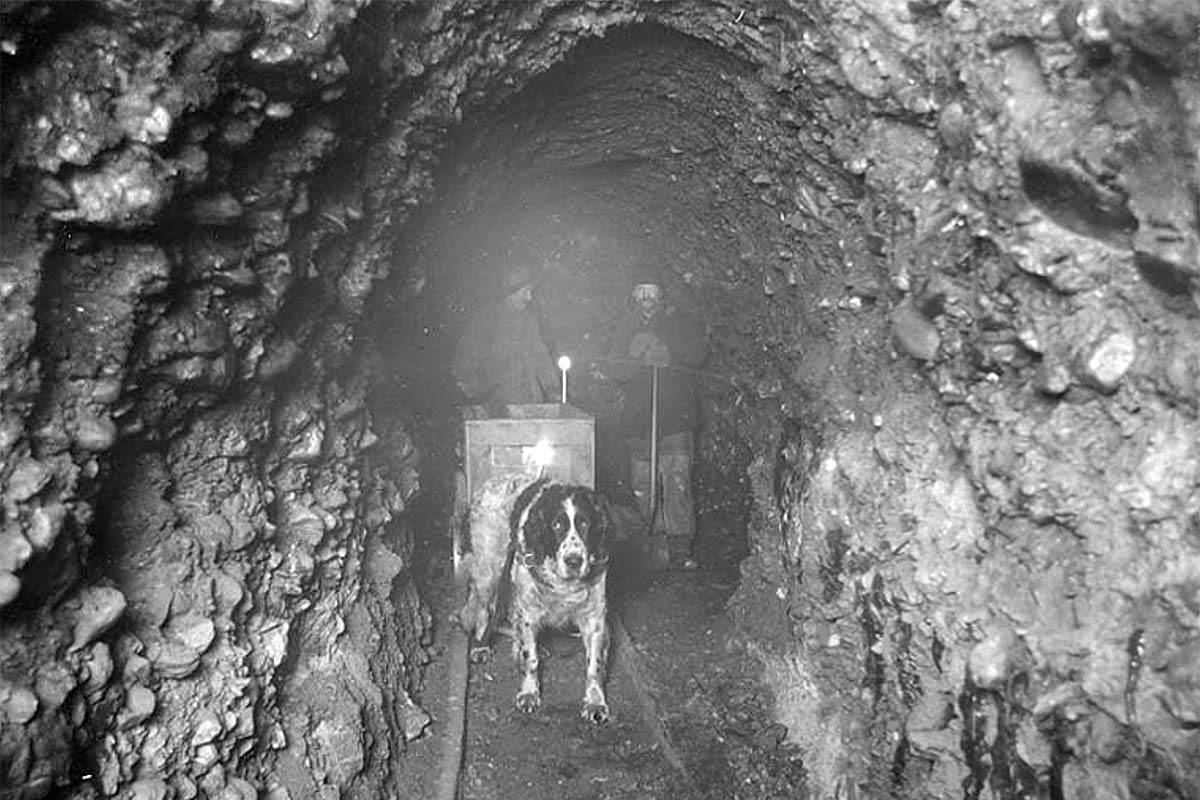
In early mining operations, dogs were used to detect dangerous air pockets or unsafe gas levels before human entry. They would signal miners, providing a natural early warning system. Modern ventilation systems, sensors, and gas meters eventually replaced this sensory role. The dogs needed courage, intelligence, and a strong connection to their handlers. While few of us imagine dogs in mines today, their work protected lives and enabled early mining operations to function more safely. Their disappearance reflects how technology replaced tasks that were once perfectly suited to canine skills. Their contribution remains an important part of mining history.
19. Sawmill Waste Transport Dogs
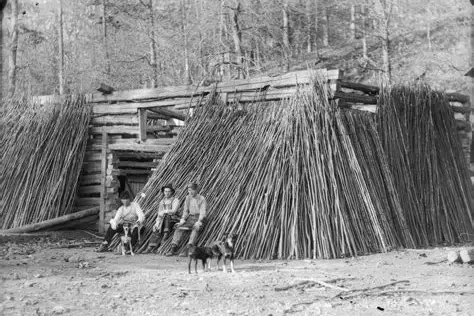
Dogs in sawmills once hauled sawdust, wood scraps, and small waste loads using sledges or carts. They transported materials from cutting areas to disposal spots, ensuring smooth workflow and keeping workspaces clear. Conveyor belts and industrial machinery later took over this task, making the role unnecessary. These dogs worked alongside humans in noisy, dusty, and physically demanding environments. Today their contribution is mostly forgotten, but they were reliable partners who understood routes and tasks. Their work illustrates the ways dogs contributed to industrial efficiency long before automation, showing loyalty, intelligence, and dedication in roles now performed entirely by machines.
20. Street Lantern Watch Dogs

Before electric street lighting, lamplighters walked nightly routes carrying oil tins, and dogs accompanied them for protection and assistance. The dogs helped carry supplies, kept watch for hazards, and ensured the lamplighter could perform the job safely. With electrical grids and public lighting, these dogs were no longer needed. They were silent helpers, part of routines that kept communities lit and safe. The role shows how dogs adapted to human schedules and needs in urban environments. Their memory remains a charming reminder of times when animals and humans worked together to maintain simple but essential services in towns and cities.
21. Canine Postal Route Companions
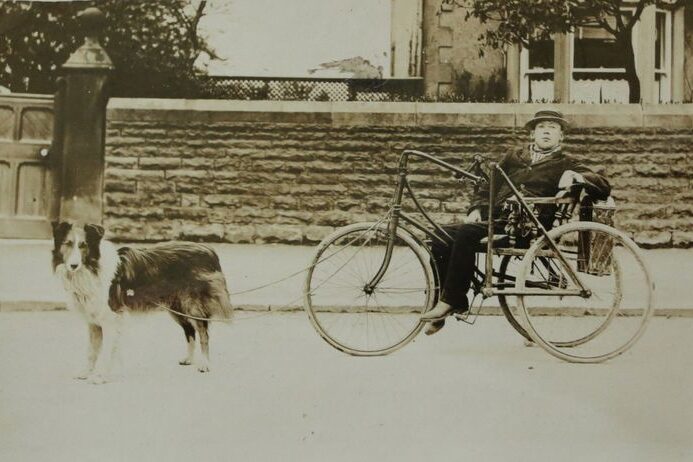
Rural postal carriers sometimes walked routes with dogs for protection and guidance. The dogs remembered landmarks, alerted the carrier to dangers, and provided companionship on long journeys. As vehicles, roads, and postal systems improved, these canine partners were no longer necessary. The trust placed in dogs to accompany carriers shows the value humans found in their memory, intelligence, and reliability. While the role has vanished, it illustrates how humans integrated dogs into essential tasks. The partnership reflects a period when daily mail delivery required both human and animal skill, endurance, and a close bond that we seldom see today.
22. Fishing Dock Retriever Dogs
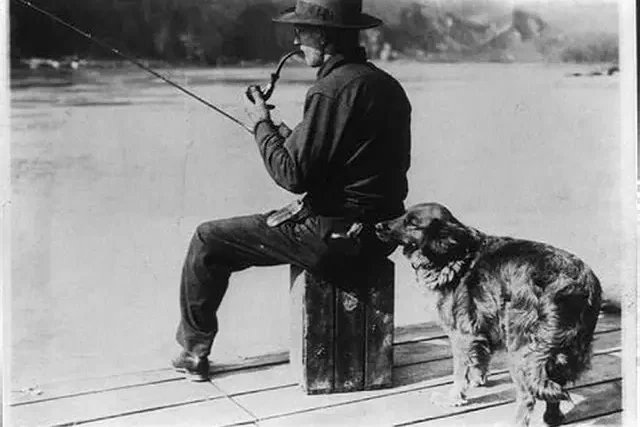
Before modern fishing gear, dogs on docks retrieved dropped fish, nets, or tools from shallow water. They reduced loss and helped fishermen recover items quickly, demonstrating intelligence and obedience. Mechanized nets and improved equipment later replaced the need for dogs in this role. Their work was physical, precise, and essential for efficiency. Today the image of a dog jumping into dock water to recover objects feels nostalgic. These dogs show the value of animals in practical work that humans relied on before technology simplified tasks. Their skills and loyalty were crucial for daily routines at busy docks and piers.
23. Traveling Library Book Wagon Dogs
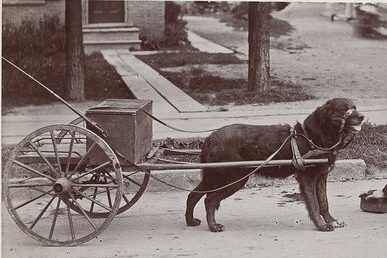
Mobile libraries in rural towns sometimes used dogs to pull small carts of books house to house. The dogs moved steadily and reliably, helping communities access reading material before motorized vans were common. As library systems modernized, this gentle role disappeared. These dogs were part of spreading education and knowledge quietly, ensuring books reached readers who could not visit a library. The job demonstrates how dogs could adapt to unique responsibilities that combined guidance, endurance, and cooperation. Today we imagine library vans, but those dogs were once tireless couriers, bringing stories and learning to countless households along their daily routes.
24. Street Performer Organ Grinder Dogs
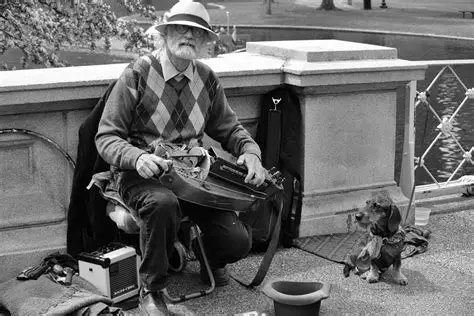
Organ grinders often had small dogs that carried coin cups or drew attention to performances. These dogs engaged audiences, encouraged donations, and became part of the show’s charm. With shifts in entertainment culture, urban development, and animal welfare regulations, this practice ended. These performers relied on canine partners for interaction and rhythm, enhancing the street music experience. Although the job disappeared, the memory remains as a quaint example of dogs helping humans in entertainment and urban life. It reminds us that animals were valued collaborators in small tasks and social culture, offering skills that contributed to daily life beyond traditional work roles.
25. Why These Jobs Disappeared

These jobs vanished not because dogs were incapable but because human technology changed work forever. Tasks that once required strength, intelligence, memory, and endurance are now handled by machines, engines, and digital systems. Yet breed instincts remain in modern dogs. Herding dogs still herd, retrievers still carry objects, and guard breeds still watch doorways. These vanished roles remind us that while the work disappeared, the skills and loyalty of dogs persist in ways we see at home and in recreation. Reflecting on this history encourages us to value the partnership between humans and dogs in all the forms it has taken.
This story 25 Working Dog Jobs That Quietly Vanished in the Last 120 Years was first published on Daily FETCH


